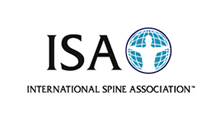
Spine Disorders
|
SIGNS AND SYMPTOMS Facet
arthropathy can be asymptomatic. It is not uncommon for there to be
intermittent symptomatology when inflammation occurs at the involved joint. The
most common symptom associated with facet arthropathy is localized pain in the
region of the involved joint or joints. This may be accompanied by reactive
muscle spasm (guarding) around the involved segment of the spine.
CAUSES Facet
arthropathy is often preceded by degenerative (hypertrophic) inflammatory
changes of the synovial membranes. If occurs most commonly in the lower
cervical spine and lower lumbar spine. It is more uncommon in the thoracic region
(mid back). Microscopic changes include excessive bone formation (hypertrophy)
as well as cracking and fissuring of the joint cartilage. The condition may be
related to excessive joint wear and tear in an otherwise predisposed
(susceptible) individual. RISK FACTORS
|
















